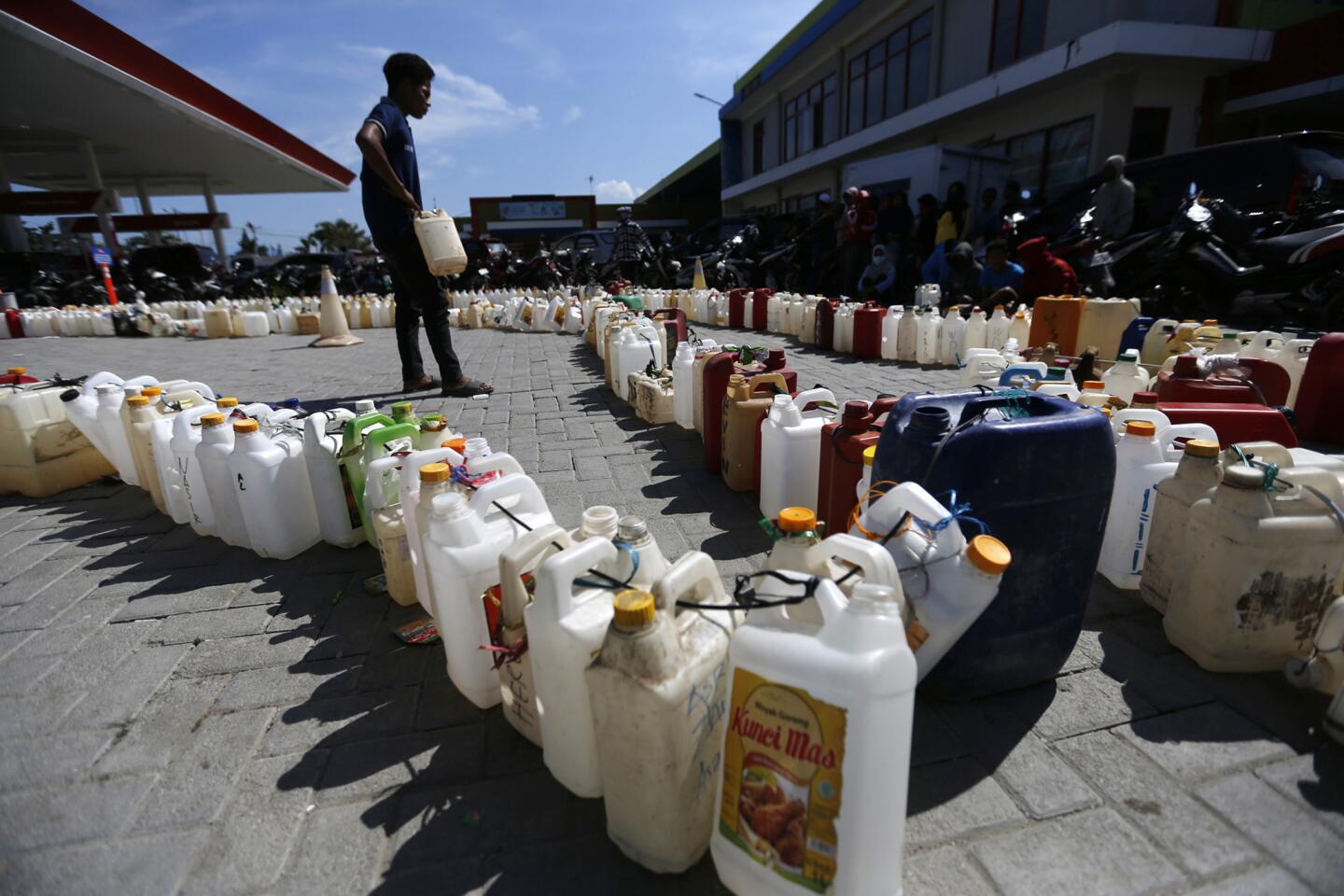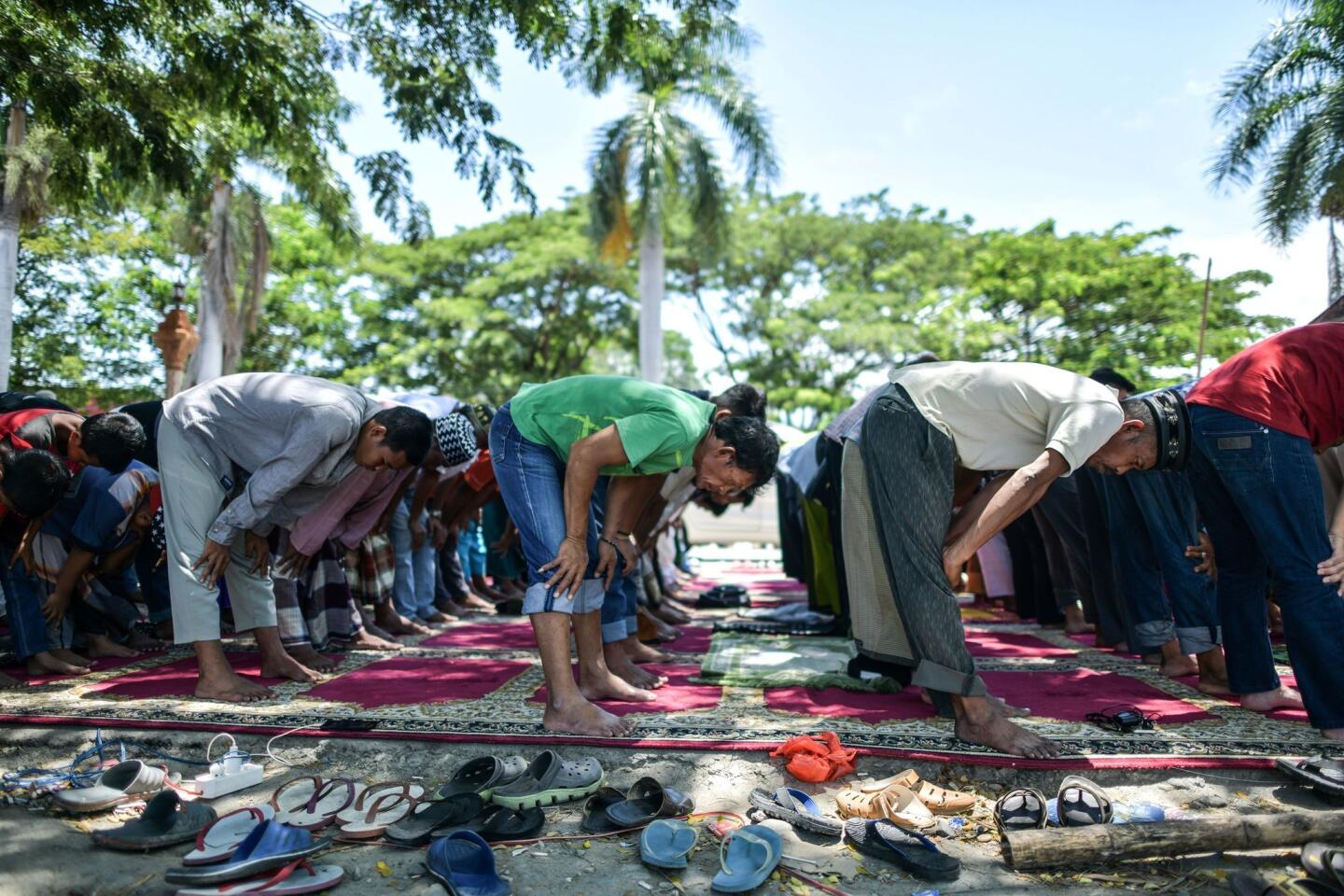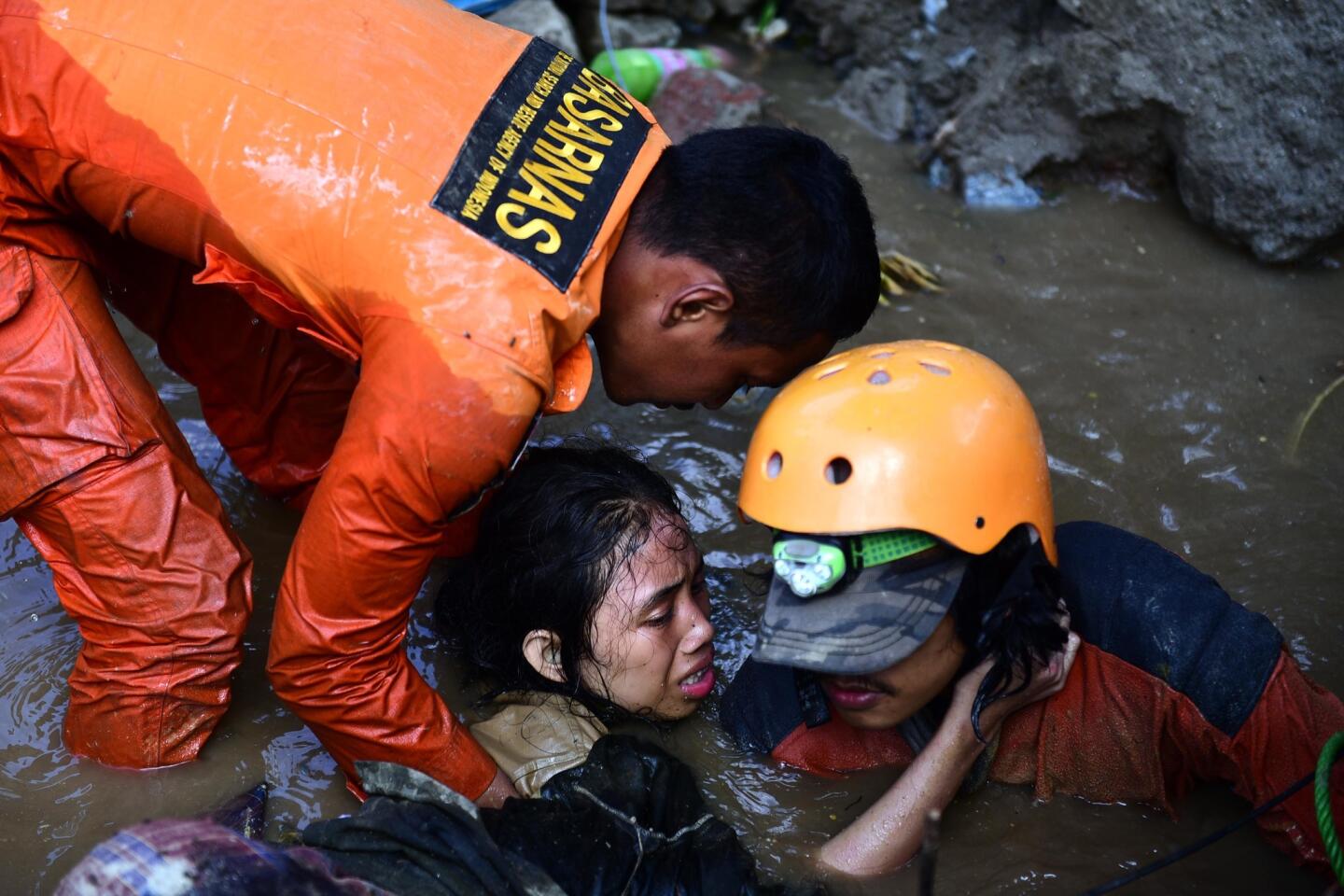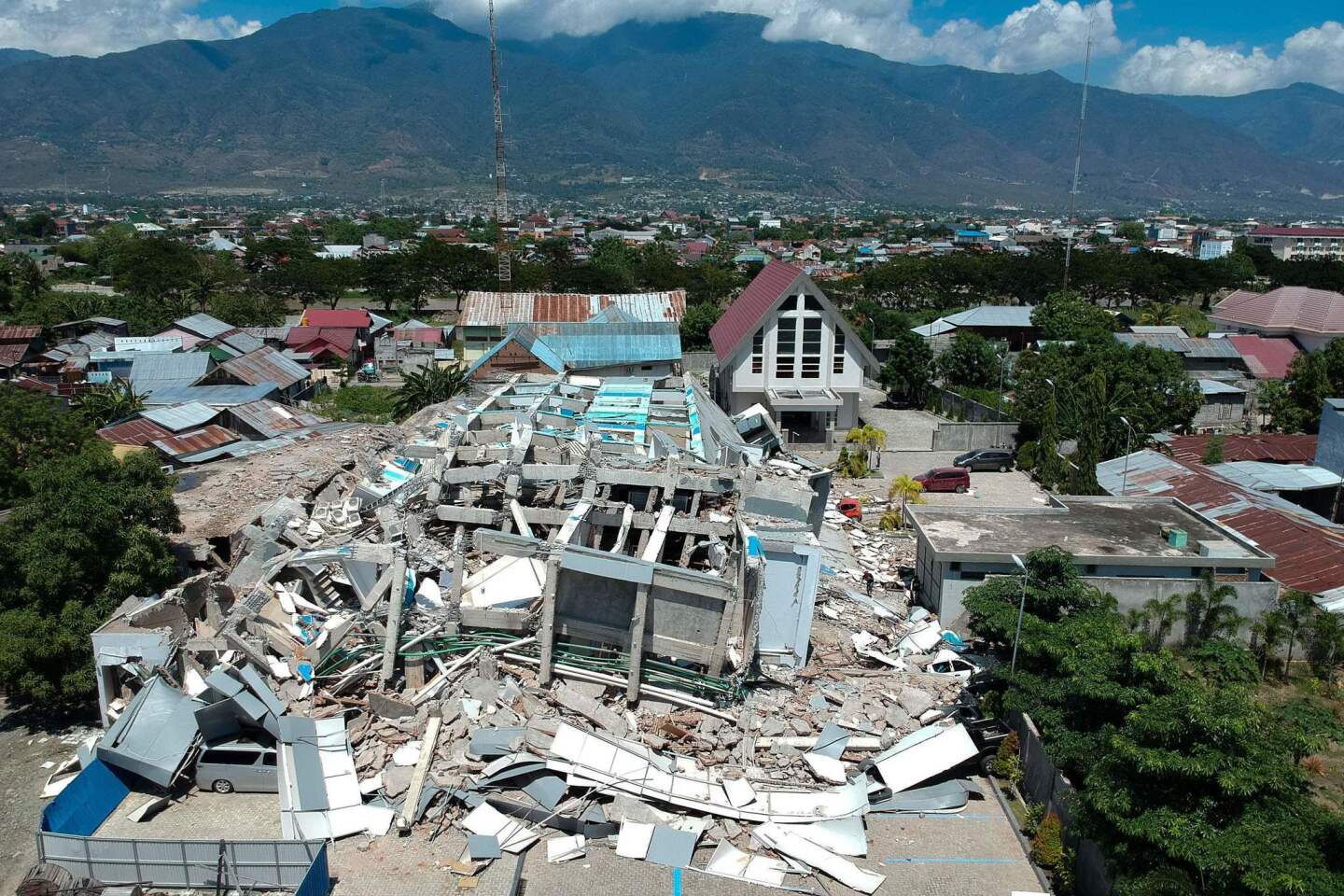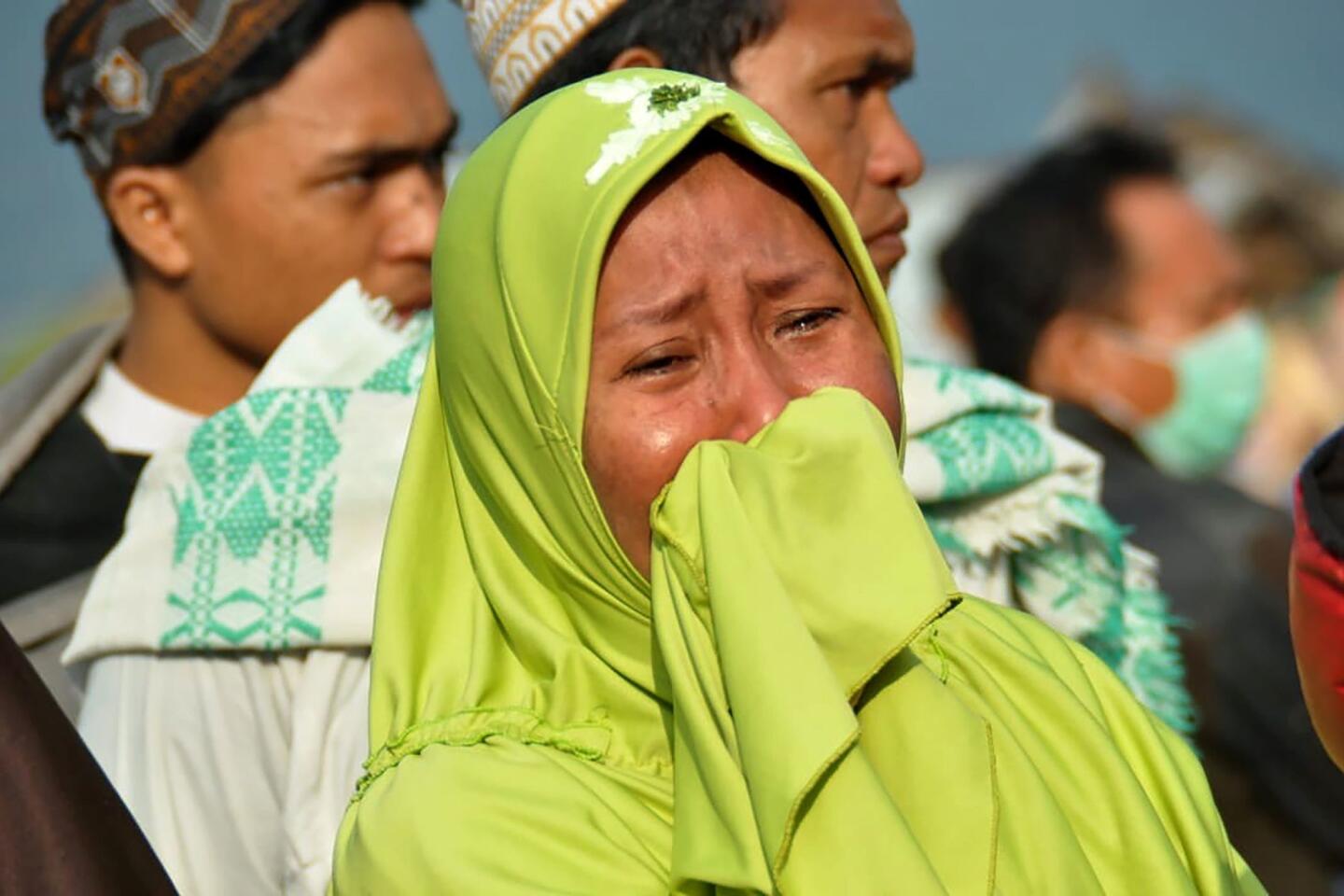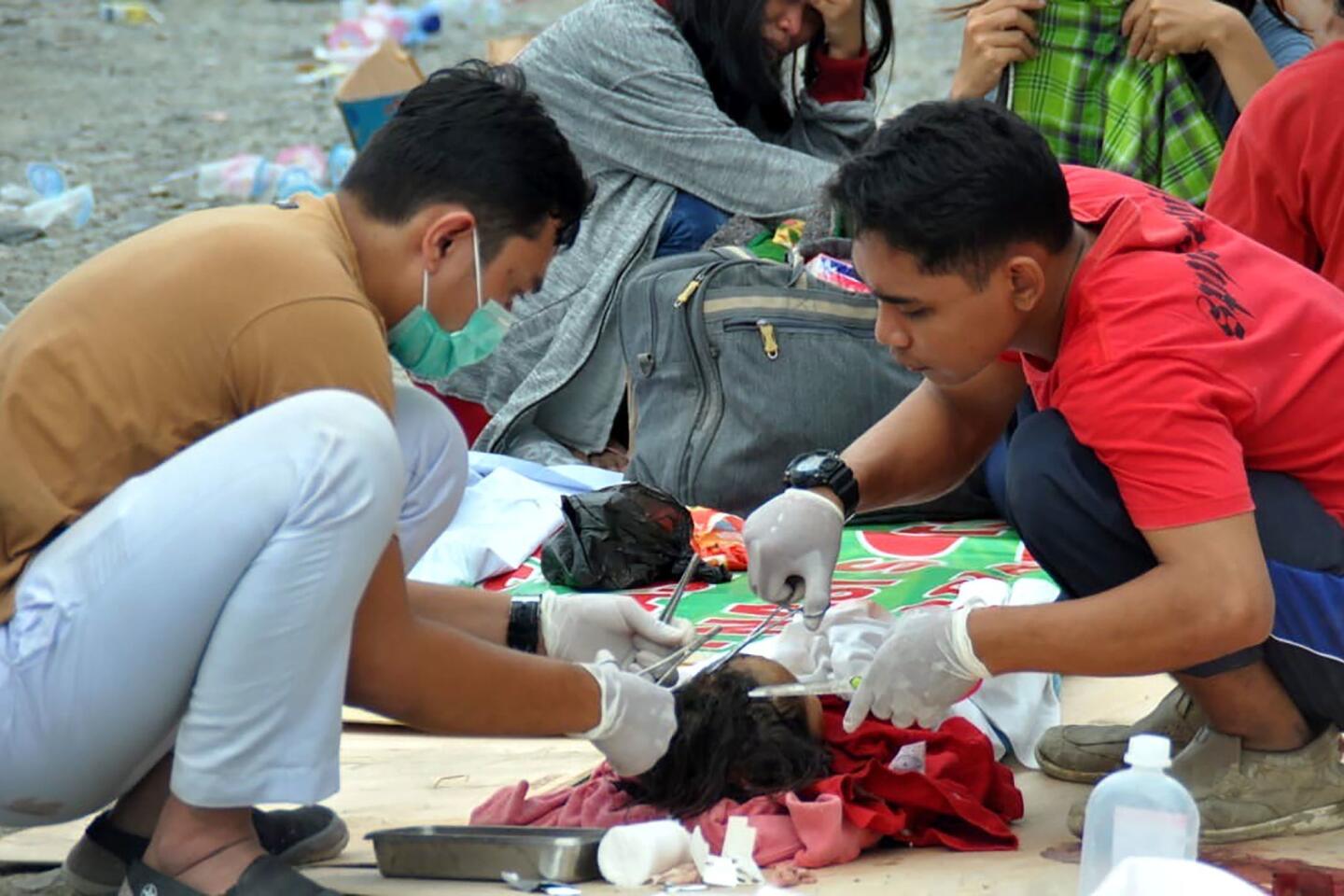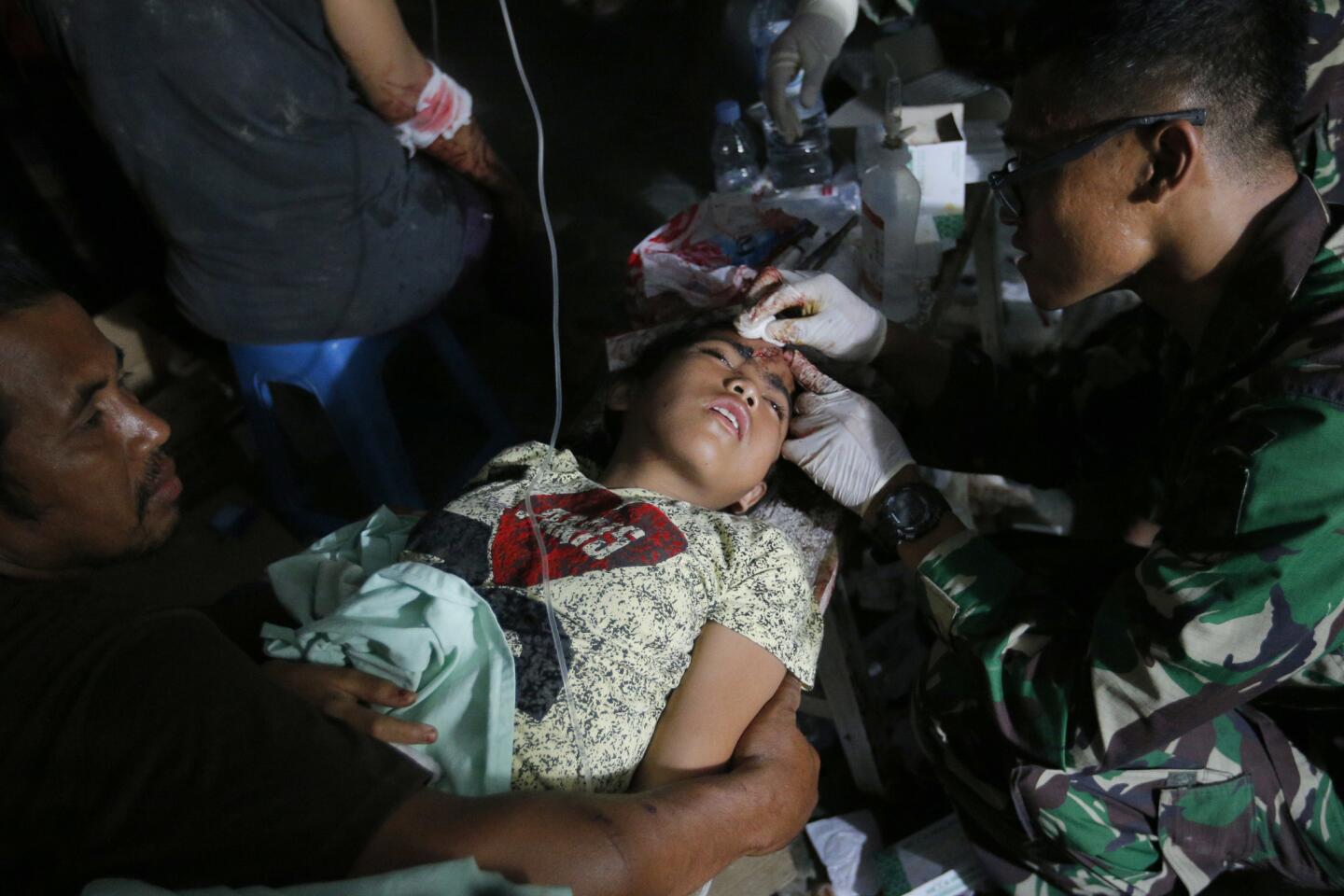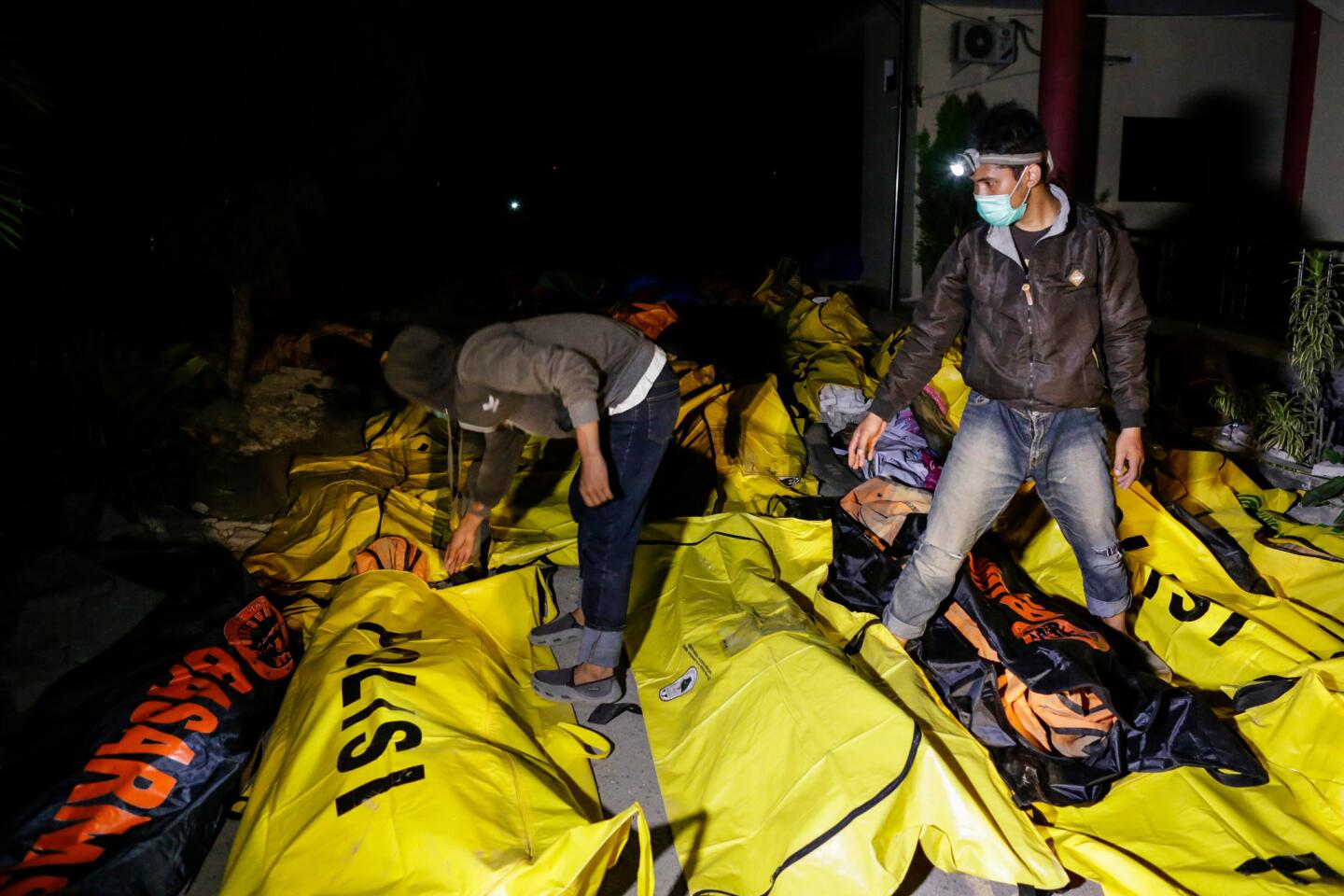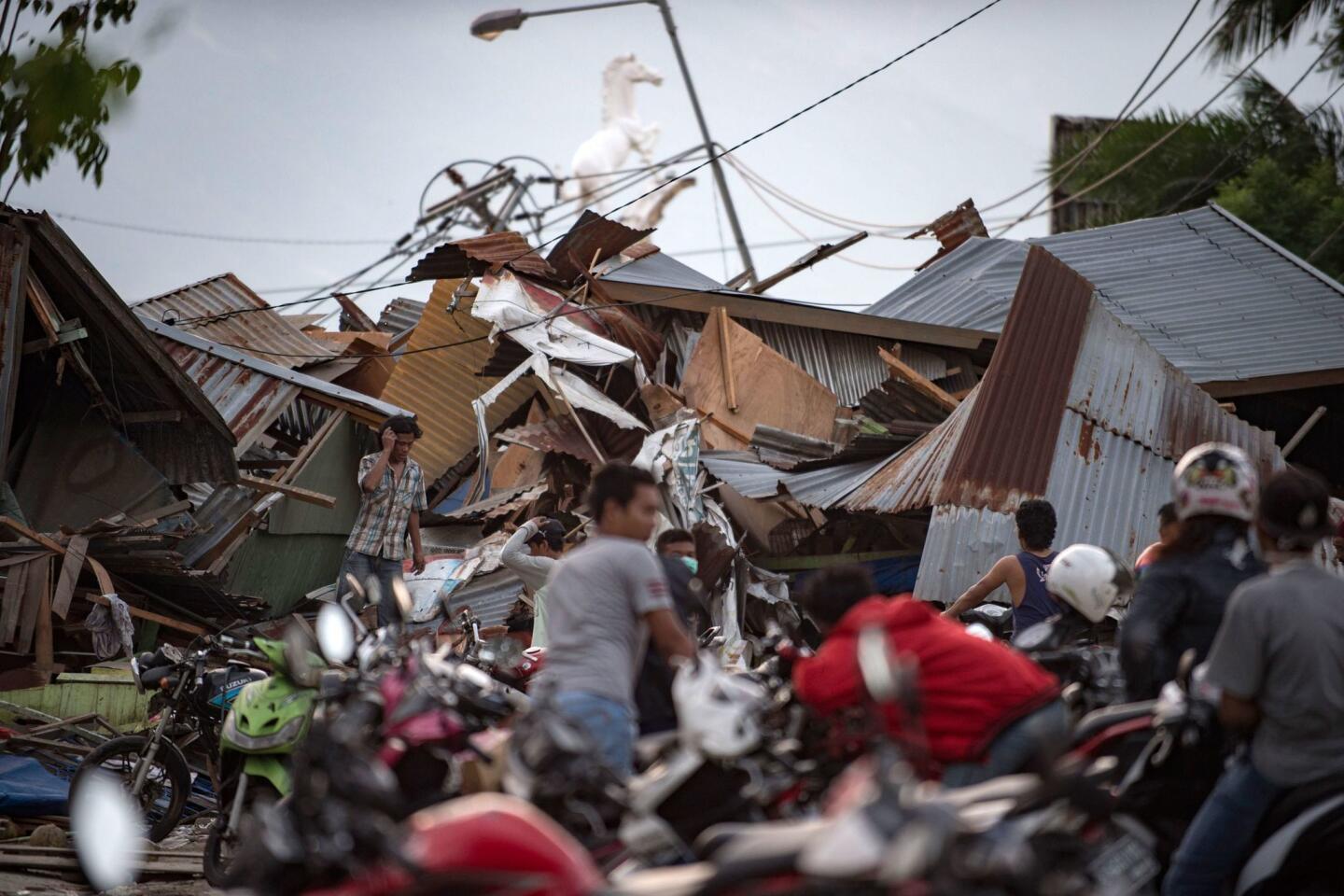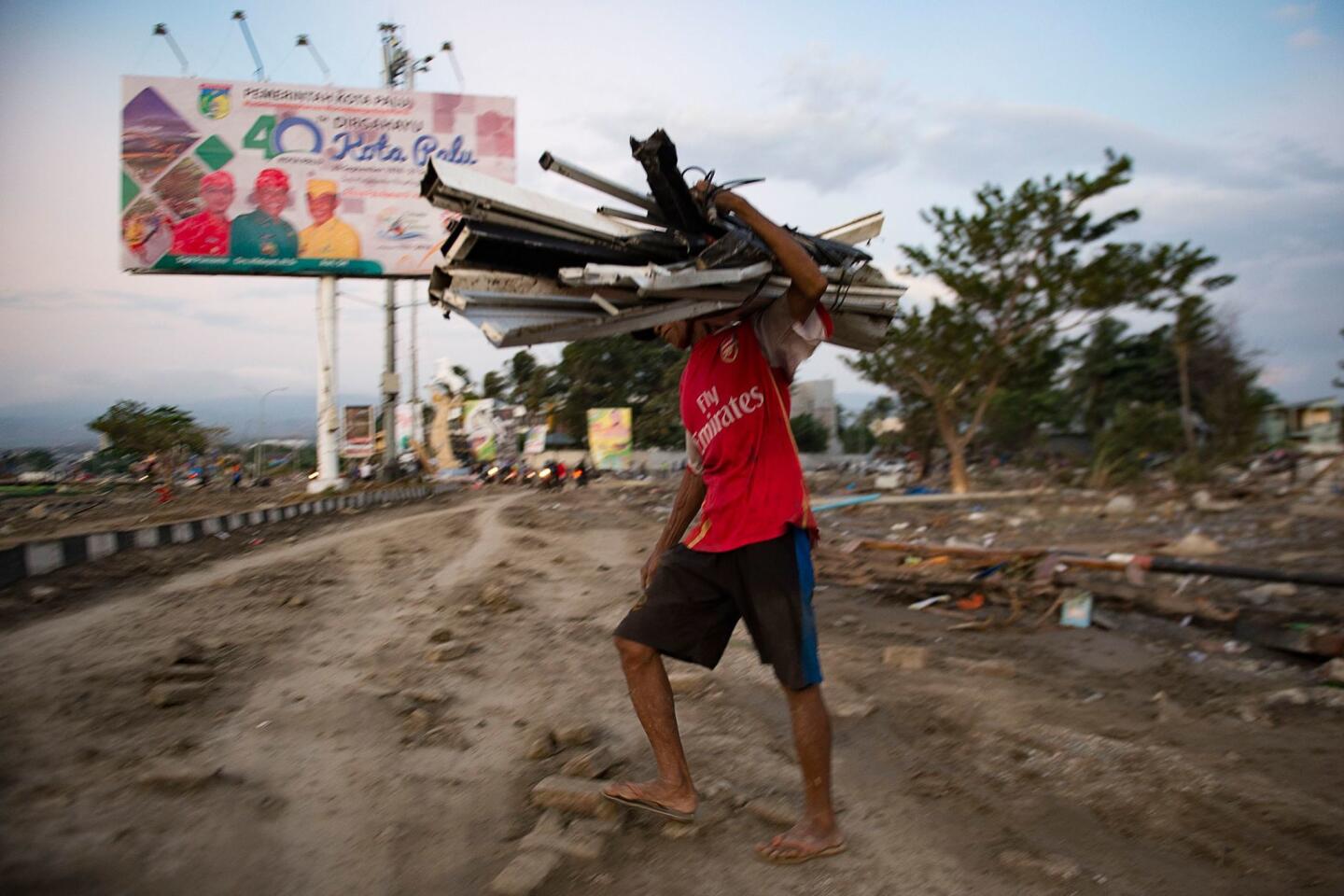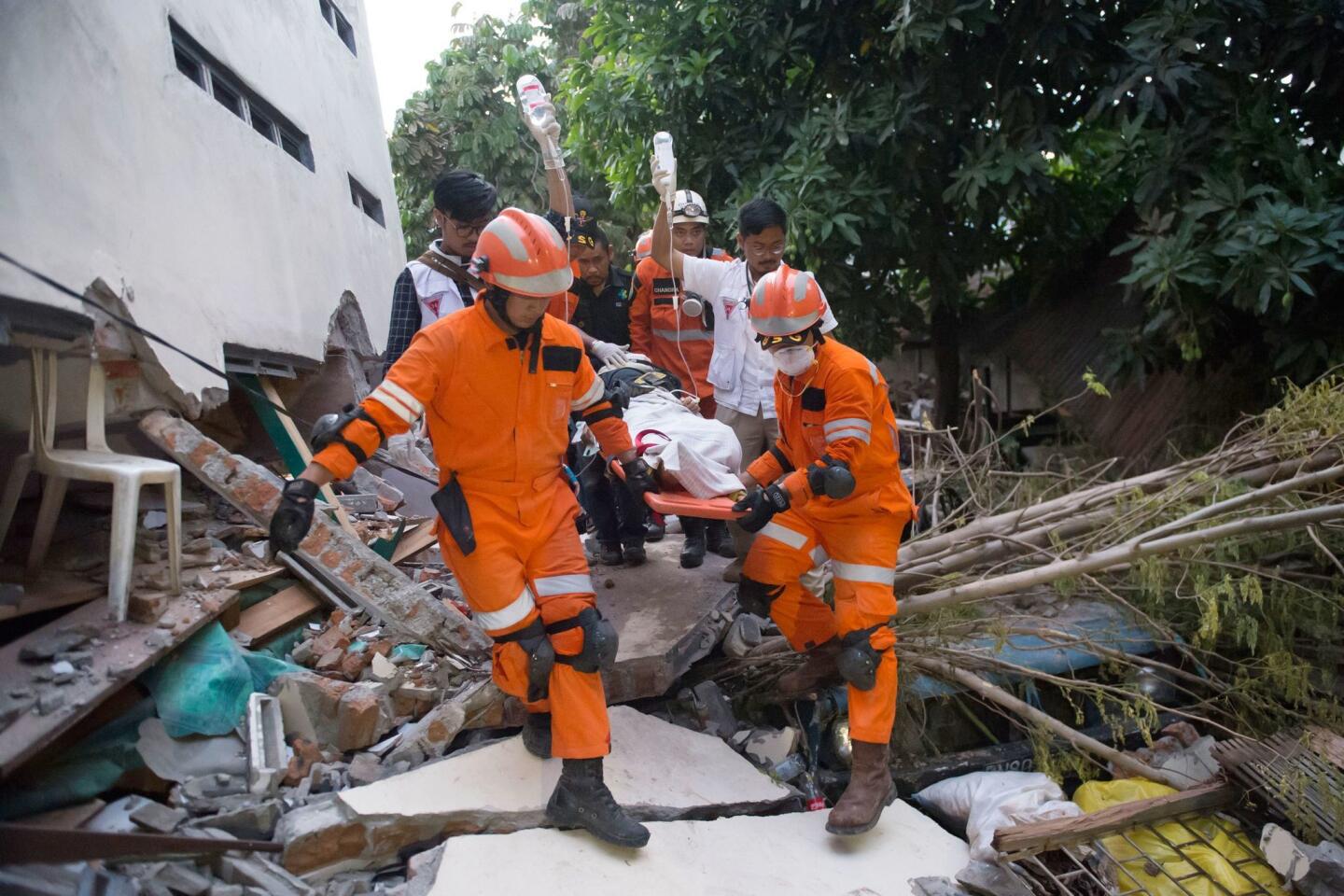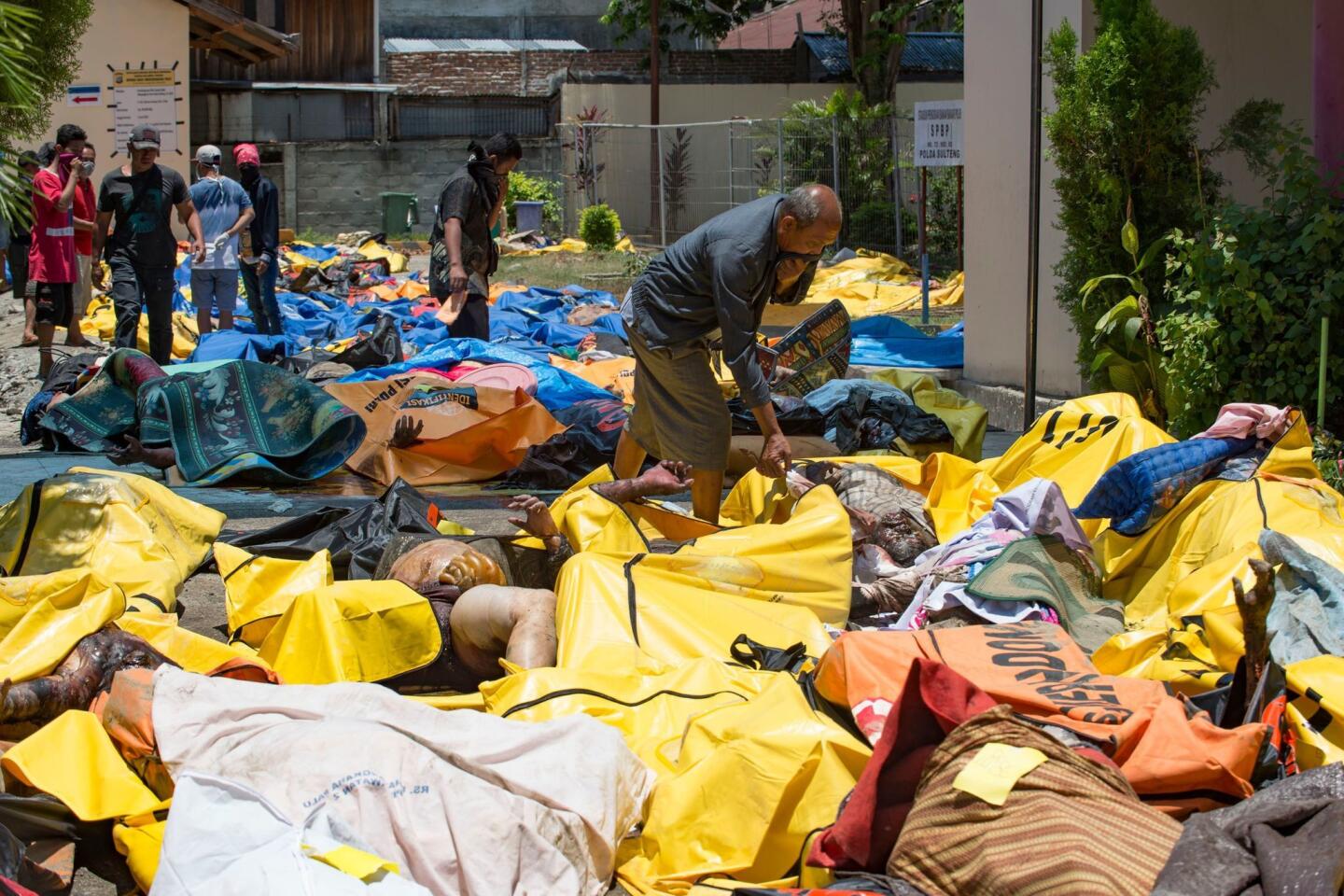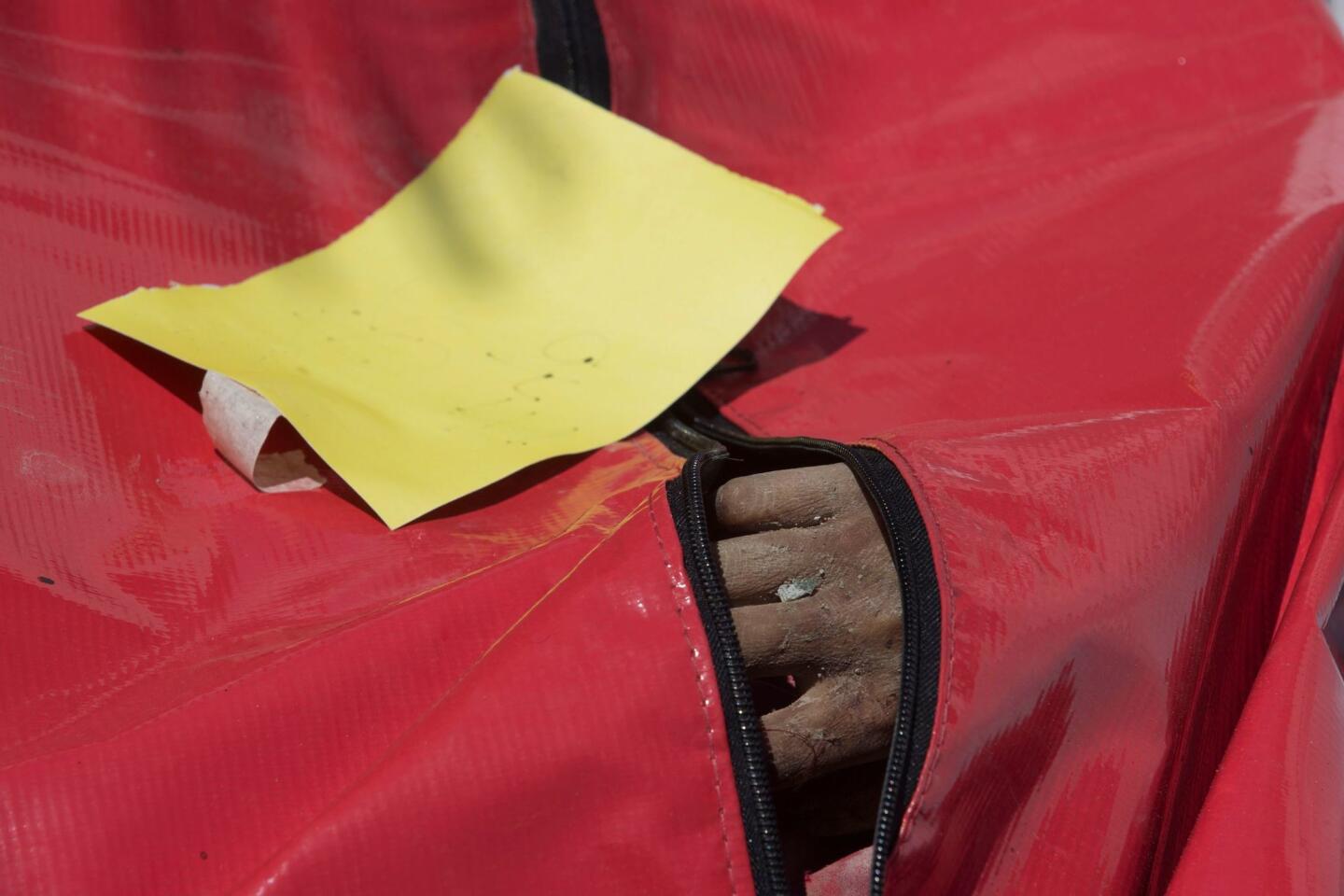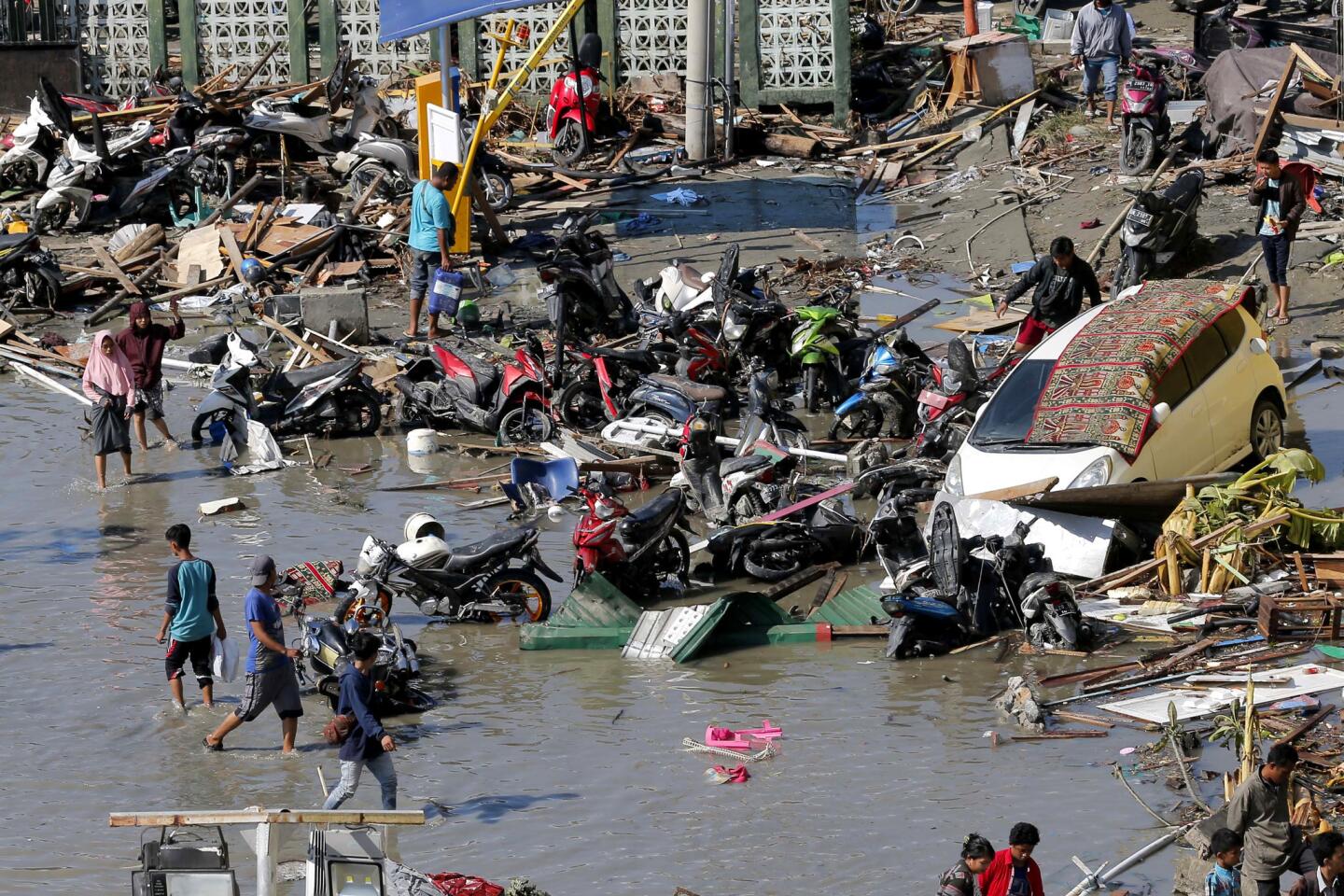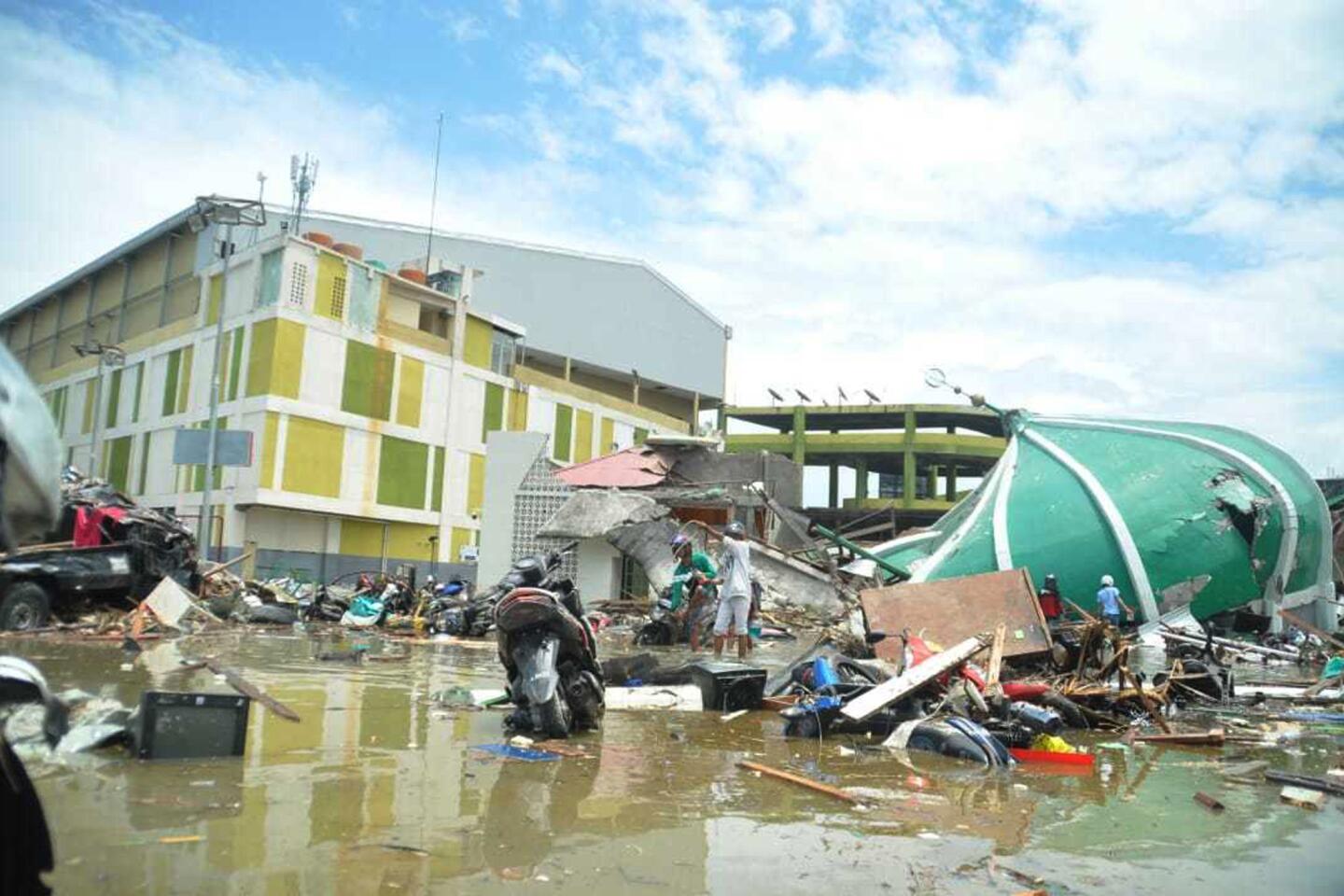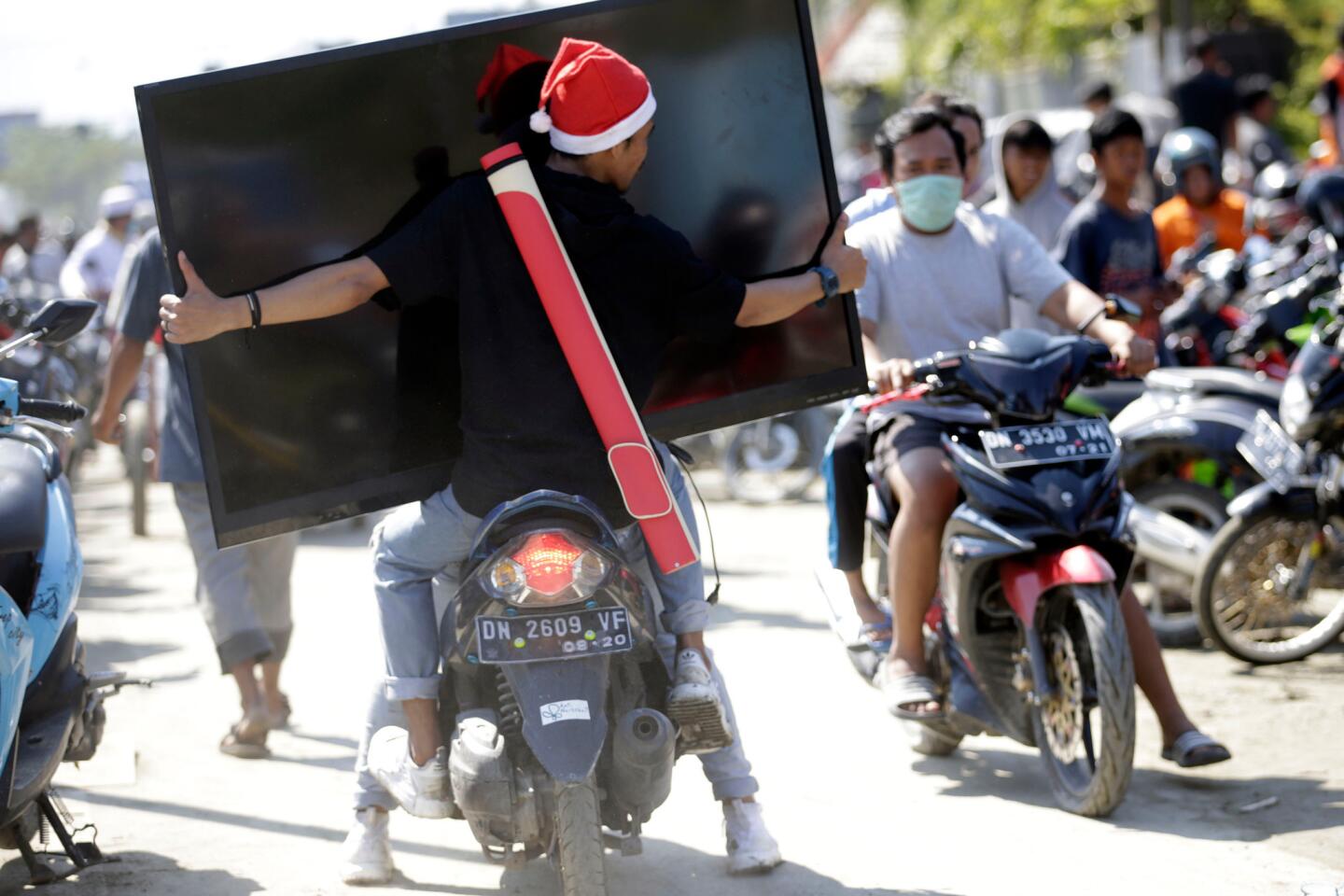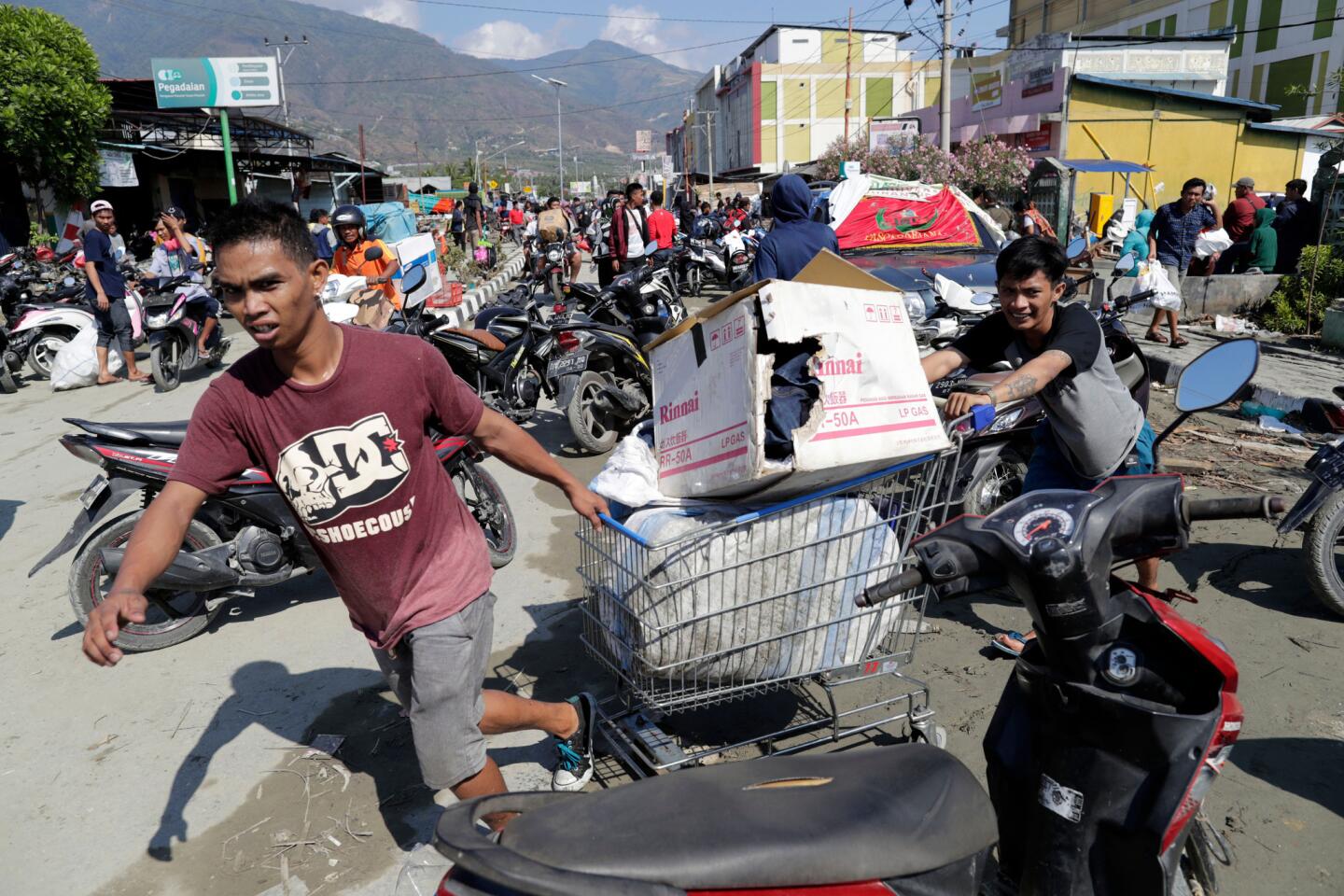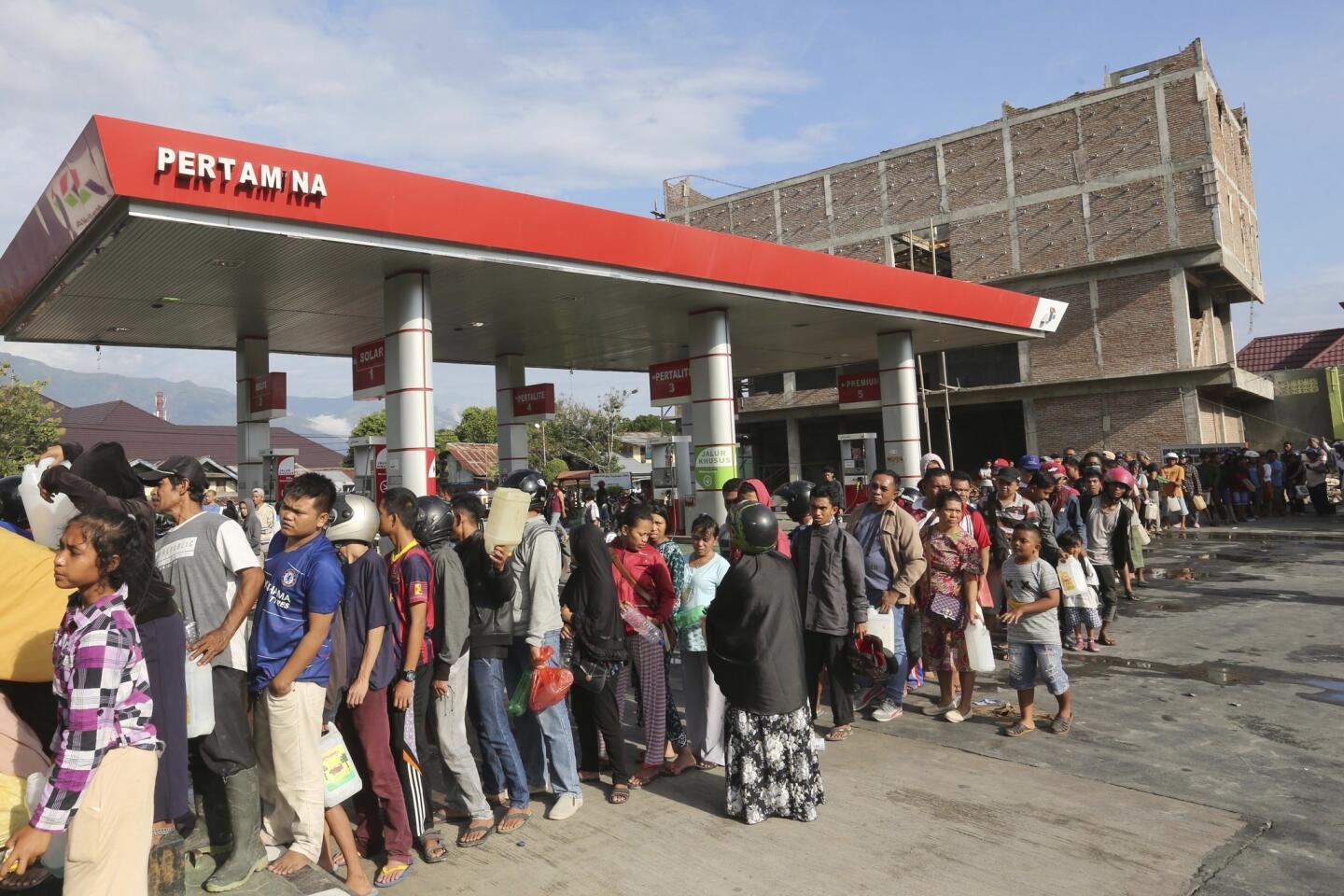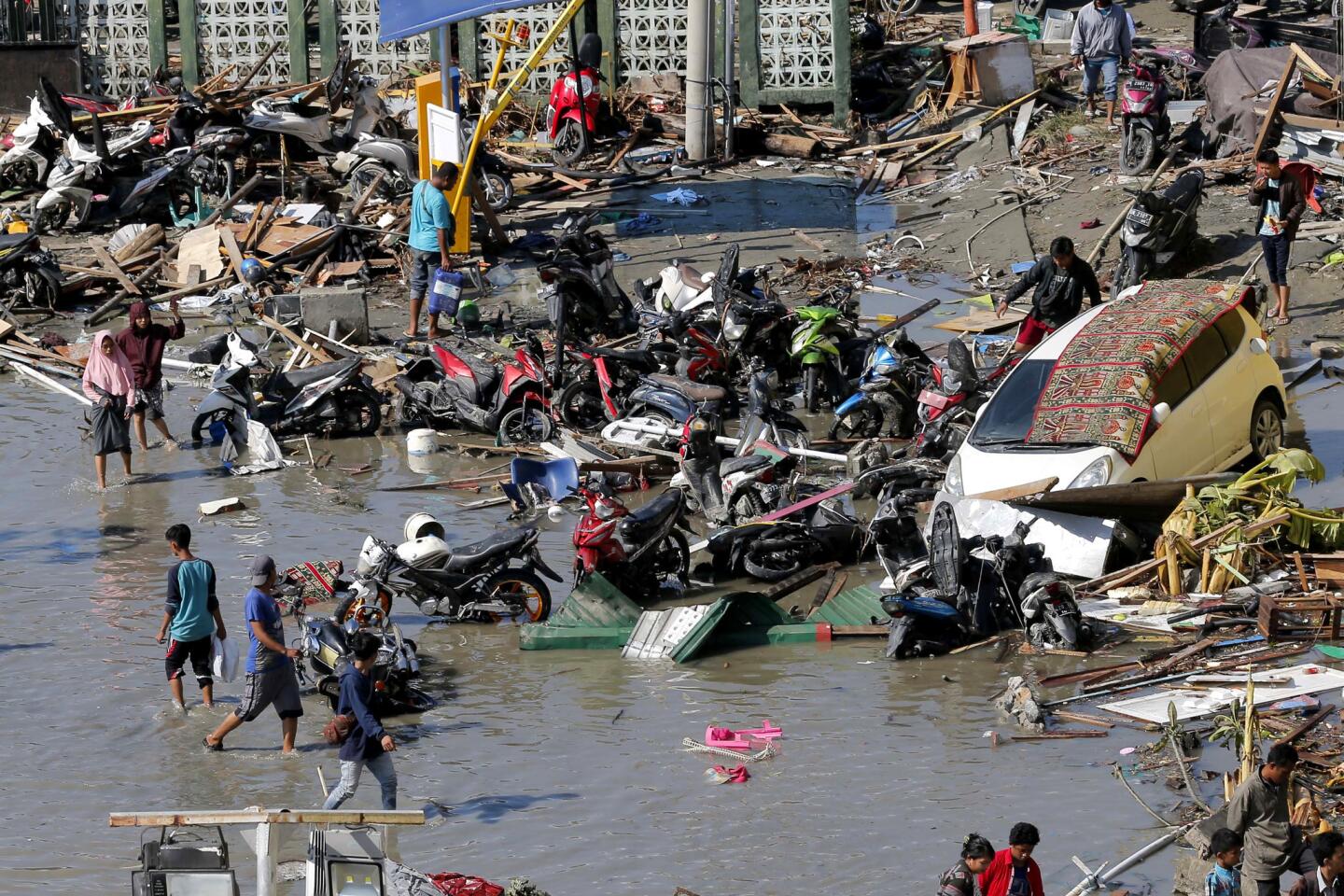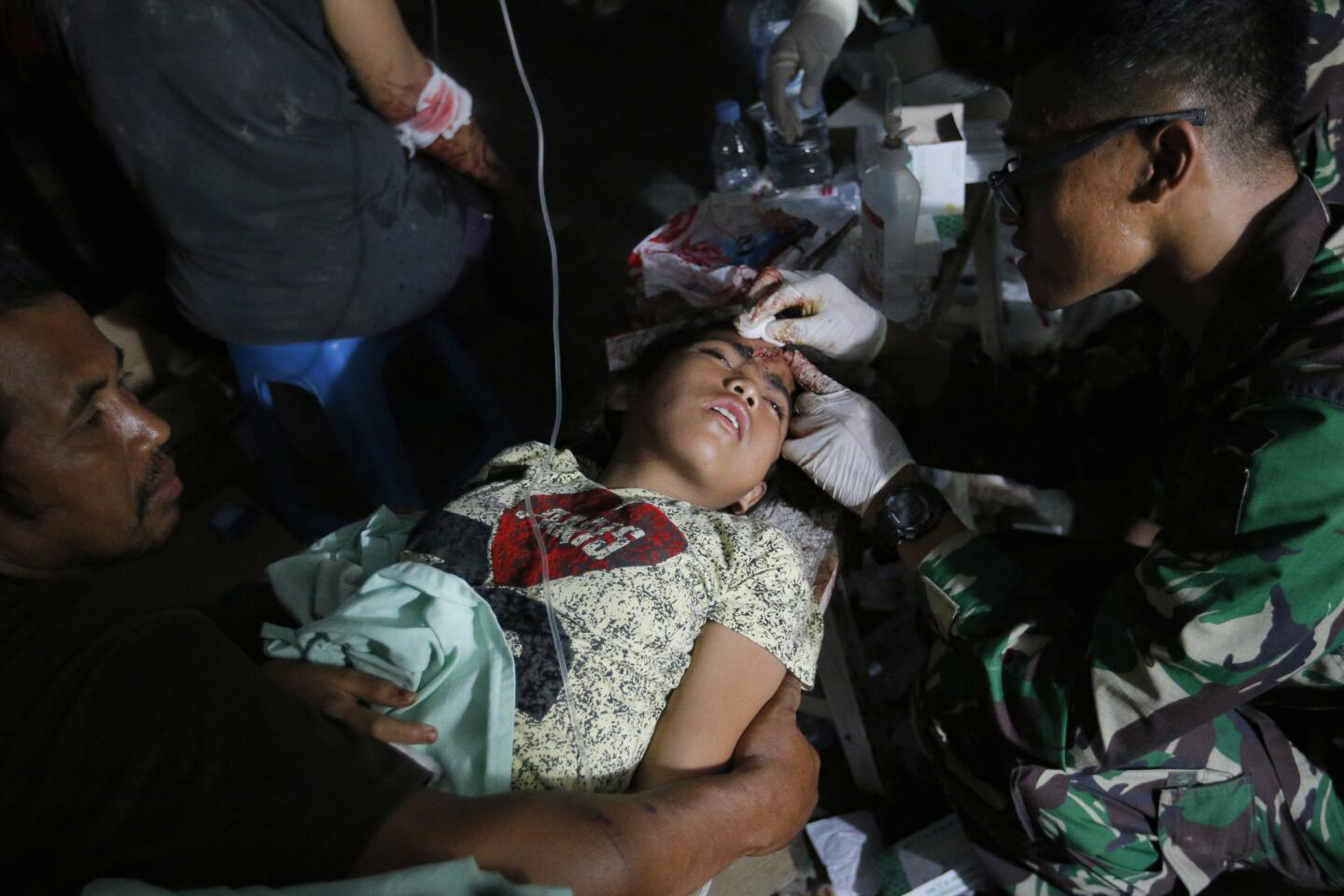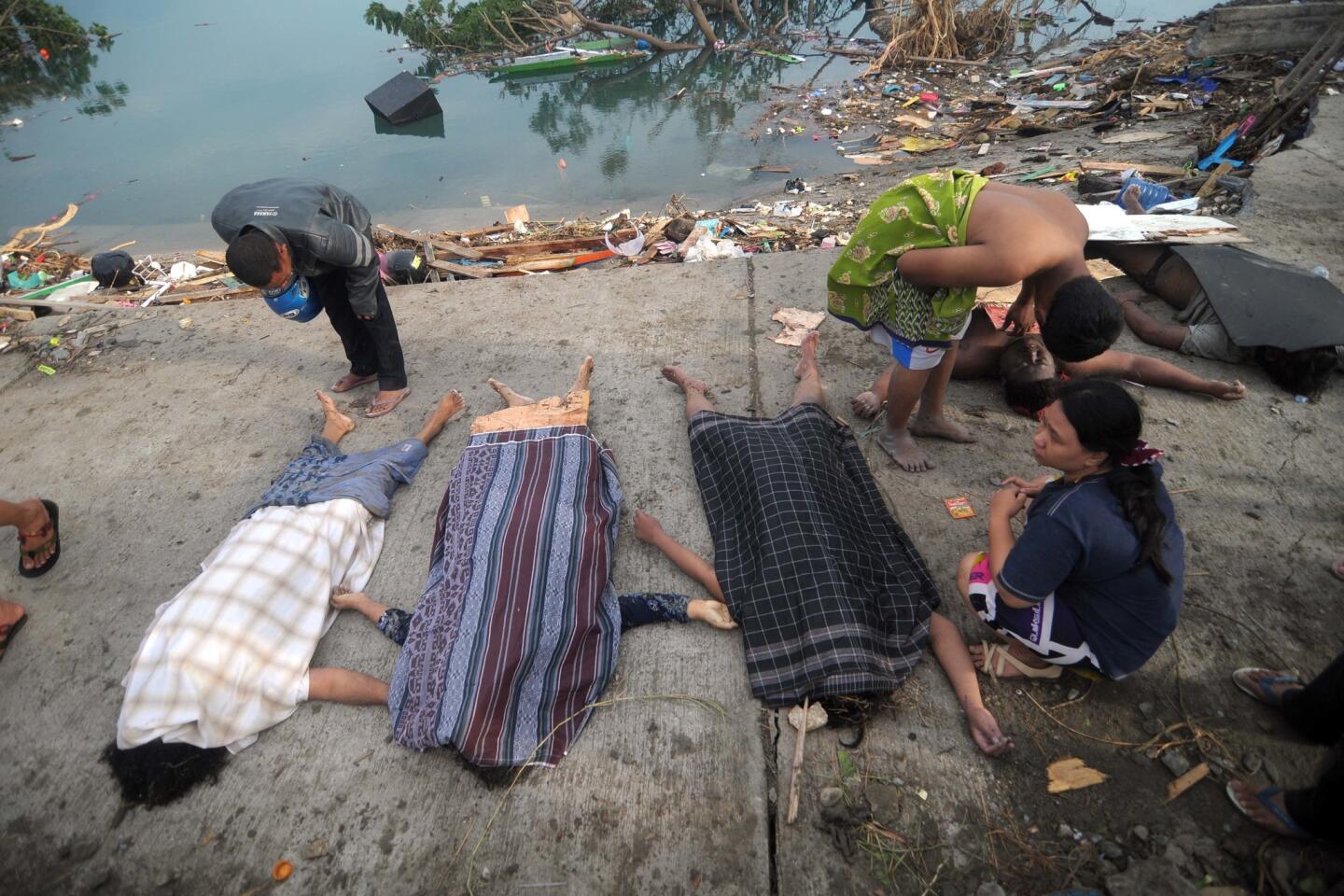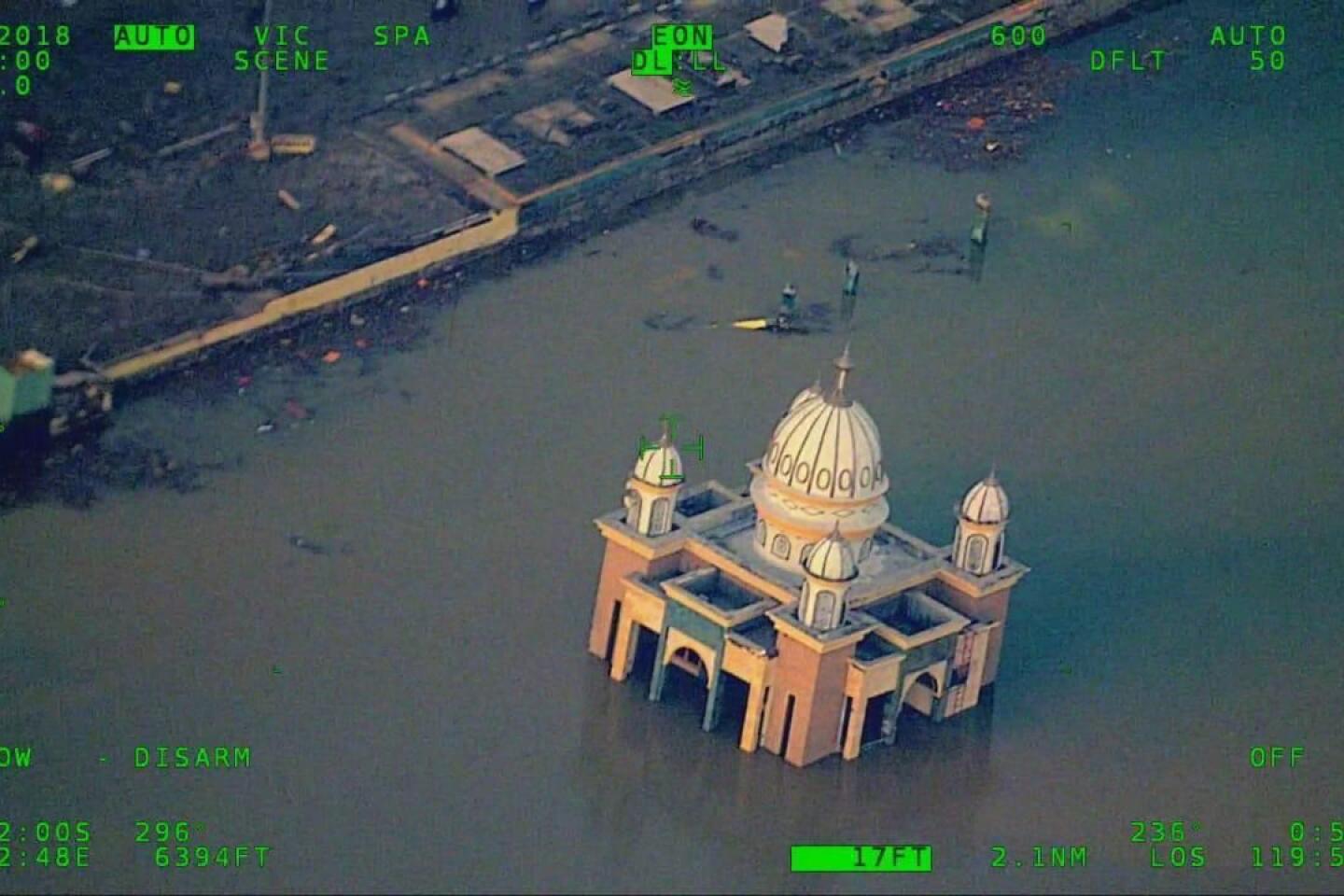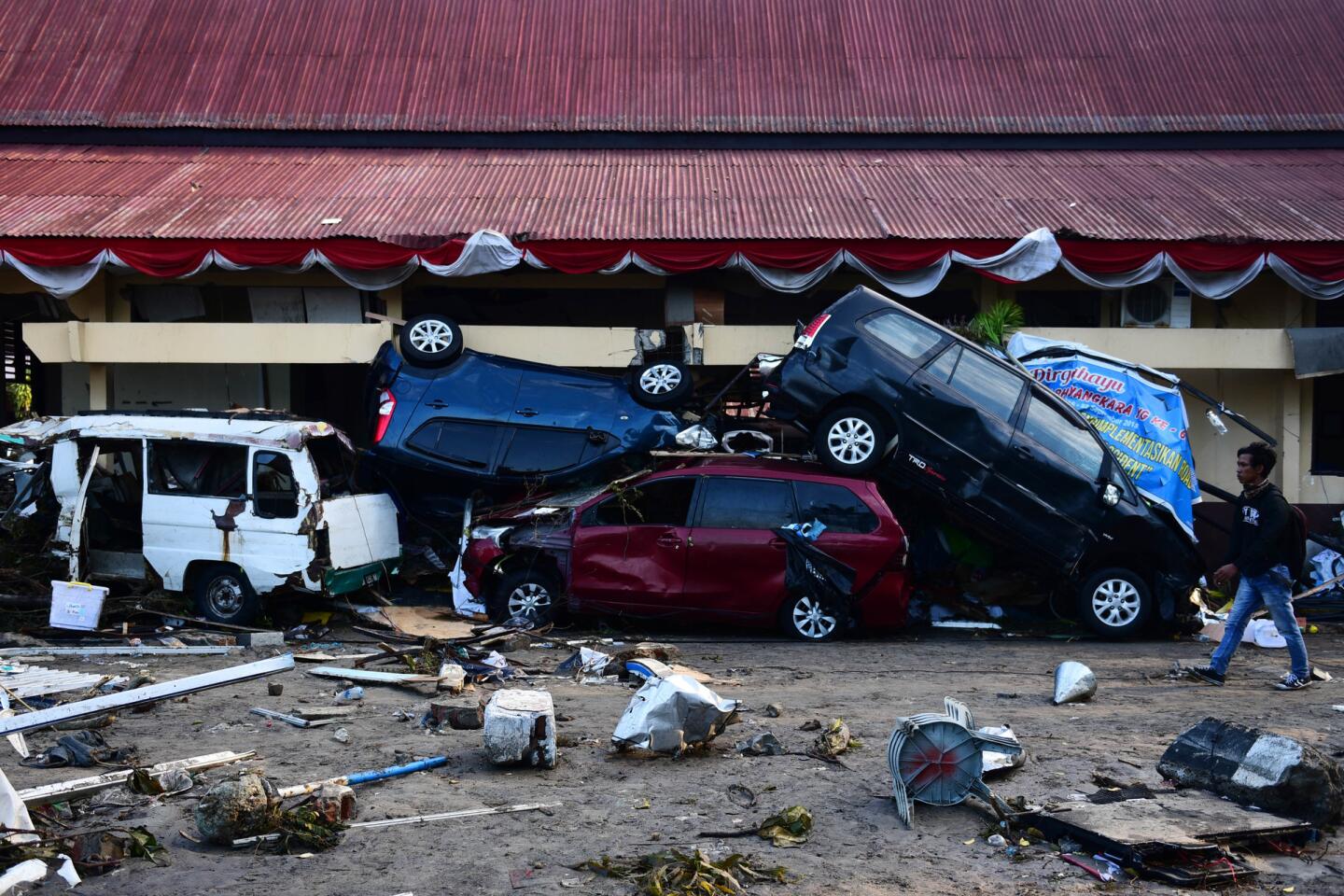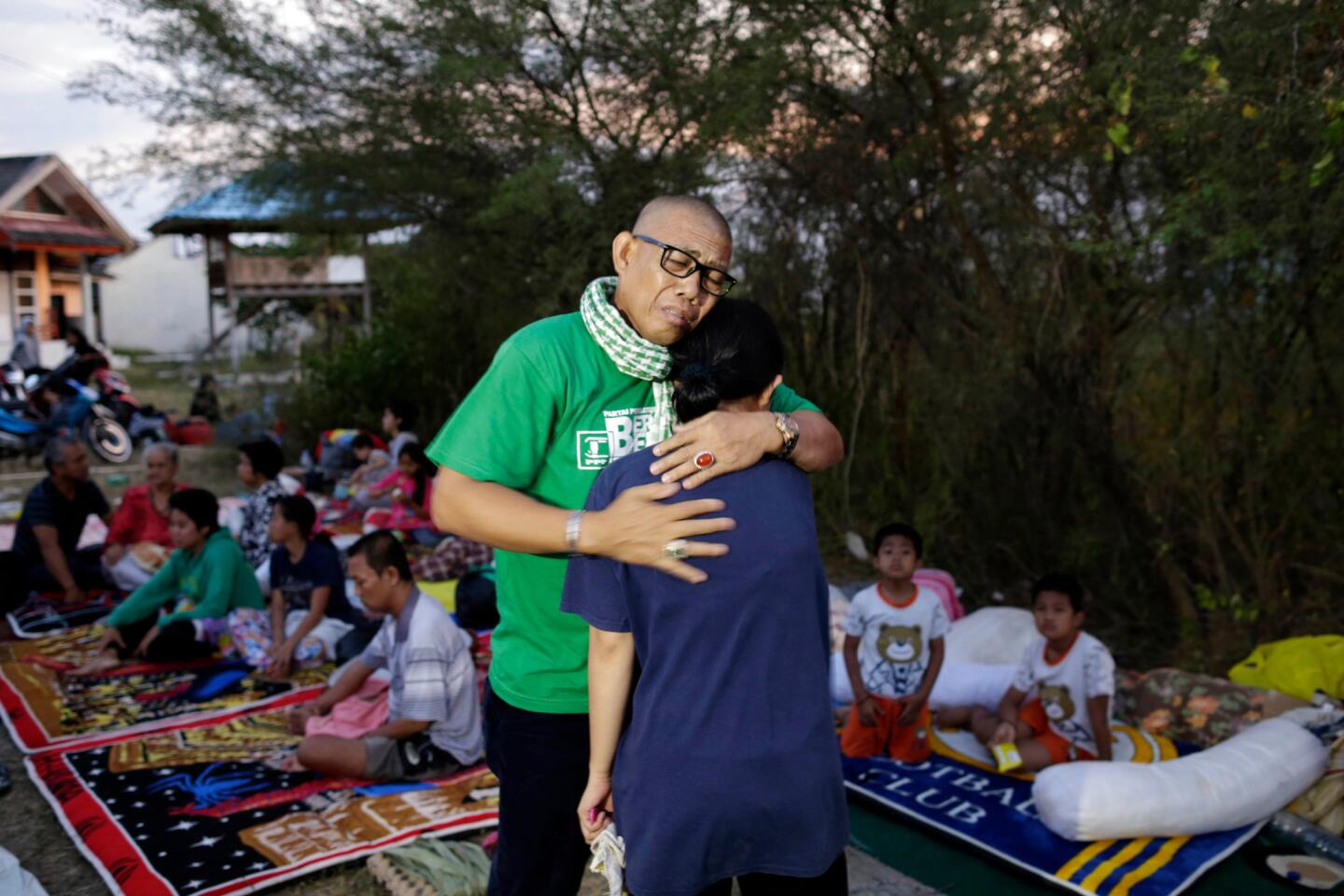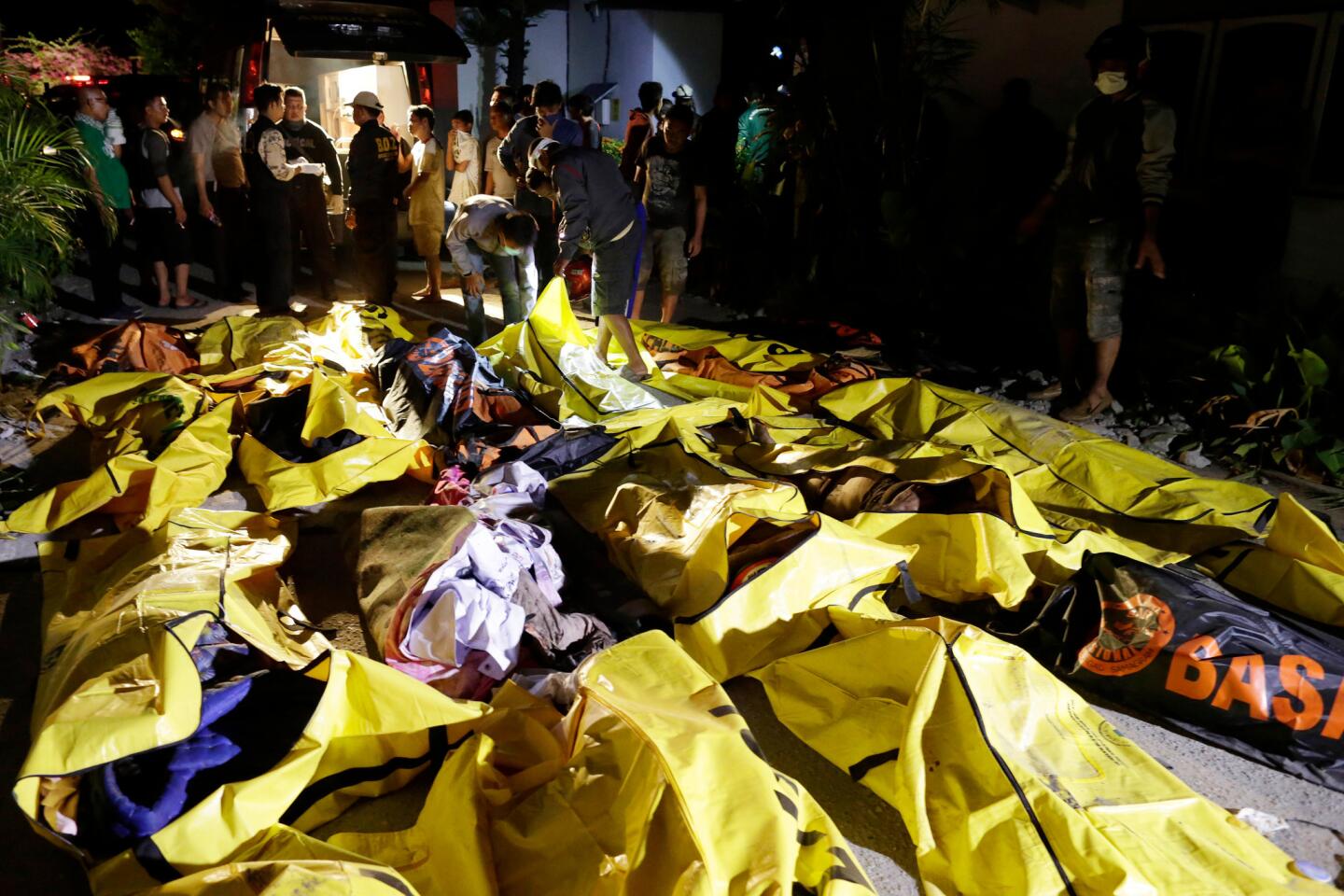Survivors begin to leave quake-stricken town in Indonesia as frustration grows over relief effort
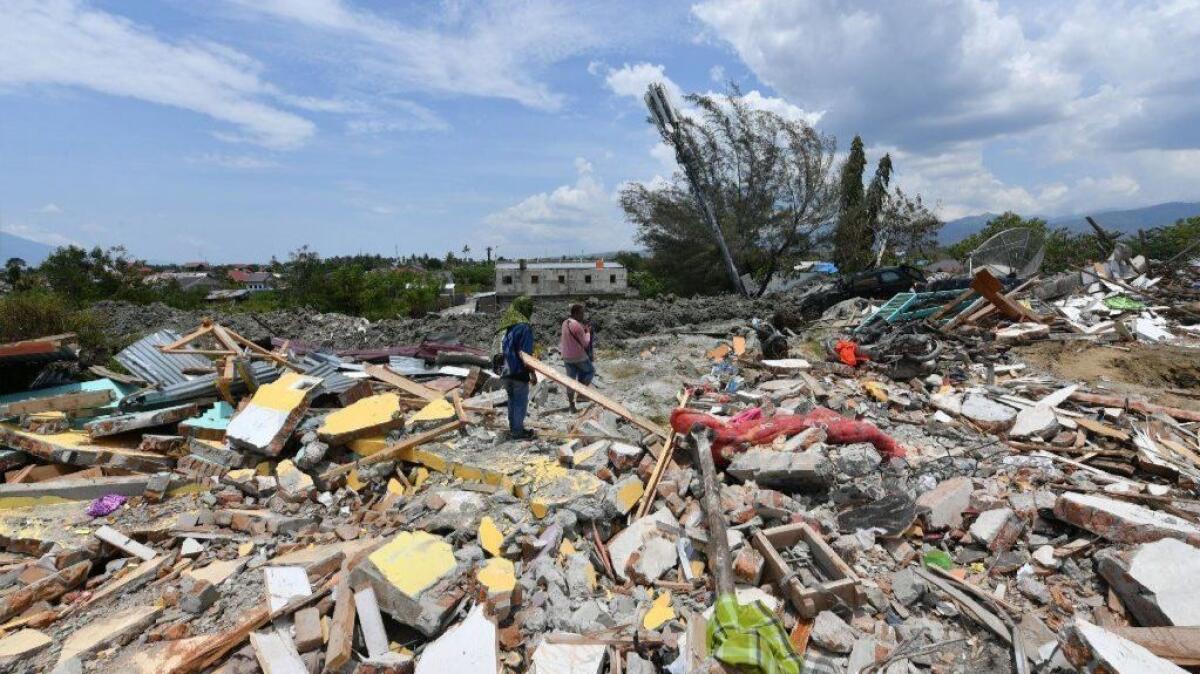
- Share via
Reporting from JAKARTA, Indonesia — Survivors were leaving the disaster-hit region of Central Sulawesi on Thursday out of frustration with what they said was the slow provision of assistance from the Indonesian government and aid agencies in the aftermath of a magnitude 7.5 earthquake and tsunami.
Widely reported shortages of food, water, gasoline and other necessities have led to looting of damaged shops and supermarkets in Palu, the provincial capital of 380,000 residents near the quake’s epicenter.
Though a few positive signs were emerging in the shattered city — with access to water restored for some residents — relief remained slow to arrive on damaged roads and ground that had churned into mud. Residents said there isn’t enough food and water for the thousands of injured and 70,000 left homeless.
“The last I heard, my brother was picking up my mother and father in Palu to evacuate to another district,” said Imade Boby, a Jakarta resident whose parents and relatives live in Palu. He said the family hoped to travel by boat or by road to an area of Parigi Moutong, north of Palu, that was less affected by the disaster.
“The communications are bad. It is hard to keep up to date,” Boby said, expressing relief that his family survived the disaster.
Officials said Thursday that 1,424 people had died in the quake and an ensuing tsunami that reached as high as 20 feet and crashed over coastal parts of Central Sulawesi, a region almost 1,000 miles east of the Indonsian capital, Jakarta.
Hundreds have been buried this week in mass funerals to reduce the risk of disease spreading. Thousands have been evacuated by sea, Sutopo Purwo Nugroho, the national disaster agency spokesman, told reporters in Jakarta.
Despite promises of relief and the Indonesian government’s acceptance of international assistance, emergency crews were still struggling to reach areas outside Palu that were cut off by debris and damaged roads.
The aid effort so far has been concentrated in Palu, which has an airport where military flights have been able to deliver some relief. By midweek, heavy-lifting equipment was helping to clear rubble and assist in the increasingly desperate search for survivors buried under toppled buildings.
A French rescue team said Thursday that its sensors had detected “the presence of a victim” in the rubble of a five-story hotel, but wasn’t able to determine whether the person was conscious, the Associated Press reported.
Getting supplies to outlying areas, or bringing in excavators and other heavy equipment to assist in digging through debris, has proved more difficult and contributed to survivors’ frustration.
“The road access is not easy at all. Many are cracked or blocked by trees, power lines, parts of buildings,” said Husni, community engagement coordinator for the International Federation of Red Cross and Red Crescent Societies. Like a number of Indonesians, Husni goes by one name.
Irwan Firdaus, advocacy manager with the aid agency Oxfam, said by phone from Palu that more heavy equipment was needed on the roads outside the town.
“There are problems to deliver assistance: water, food, water purification,” Firdaus said.
The challenges for aid workers are compounded by Indonesia’s geography: Its 17,000 islands stretch across a distance about as great as that from Alaska to New York and sit on an area of heavy tectonic activity known as the Ring of Fire, which sees frequent earthquakes and volcanic eruptions.
On Wednesday, the volcano Mt. Soputan spewed ash 13,000 feet into the skies above Central Sulawesi. Although the eruption was not deemed a threat to the disaster-hit Palu region or to aircraft attempting to deliver aid, it highlighted the challenges of getting urgent help to remote regions of the archipelago.
With Palu’s damaged airport only able to handle a limited number of flights, an aid ship was dispatched Sunday from Jakarta and took until Thursday to reach Makassar, the biggest city on the island of Sulawesi. The cargo, including much-needed food and medical equipment, would take “probably another 24 hours” to be brought by road to Palu, nearly 600 miles north, Husni said.
In recent days, Red Cross teams have fanned out to areas outside Palu, where grim accounts of the devastation underlined officials’ warnings that the death toll would continue to rise as damage in those areas was fully assessed.
Balaroa, a village of about 2,000, “was really flattened,” Husni said. Satellite maps and aerial images captured since the quake show little more than bare earth where hundreds of houses stood before the quake and tsunami last Friday.
It was one of several locations that suffered a quake-related phenomenon known as liquefaction, which turns solid ground into a churning mire that swallows up buildings and anything else on the surface, or spins structures hundreds of yards from their original location.
“Community leaders I spoke to don’t know how many people were buried” in Balaroa, Husni said. “Some say maybe 50% of the people.”
Husni described meeting survivors who said a funeral had been taking place at the bottom of a hill as the earthquake hit. In the ensuing landslide, an unknown number of mourners were buried, he said.
“The quake sent soil from the top down,” Husni said. “They are not sure how many are buried.”
Special correspondent Roughneen reported from Jakarta and Times staff writer Bengali from Mumbai, India.
Shashank Bengali is South Asia correspondent for The Times. Follow him on Twitter at @SBengali
UPDATES:
12 p.m.: This article was updated throughout with additional quotes and details.
This article was originally published at 7 a.m.
More to Read
Sign up for Essential California
The most important California stories and recommendations in your inbox every morning.
You may occasionally receive promotional content from the Los Angeles Times.
